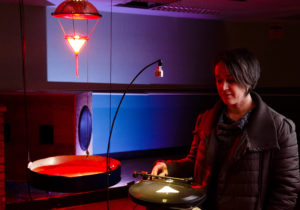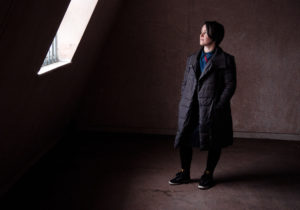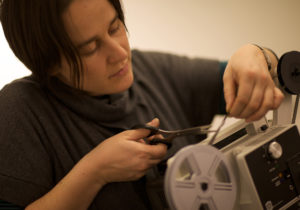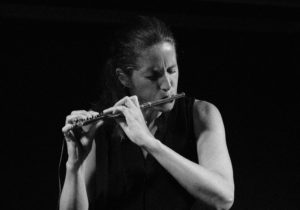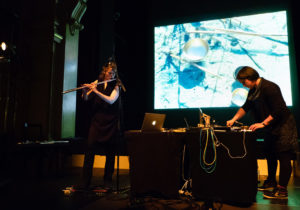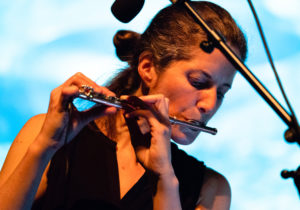Venus Unwrapped: Composing Herself Kathy Hinde
Interview
Bristol-based audio-visual artist Kathy Hinde makes a unique contribution to Venus Unwrapped & Luminate with Scattering Layer, (Sat 9 Feb, Hall Two), here she speaks to Programme Director Helen Wallace about her inspirations and ambitions.
How would you describe yourself?
An audio visual artist. I’ve always been passionate about combining visual art and music.
Where’s home?
Bristol. A wonderful creative city with tonnes of interesting stuff happening.
What led you into this field of work?
Since I was tiny I spent as much time as possible drawing, painting, making things and playing the piano. I’ve always been really motivated to pursue this passion, and I’m fortunate enough to have received encouragement and been offered opportunities on this journey.
‘You might feel like being in the middle of a swarm of bees or a murmuration of starlings’
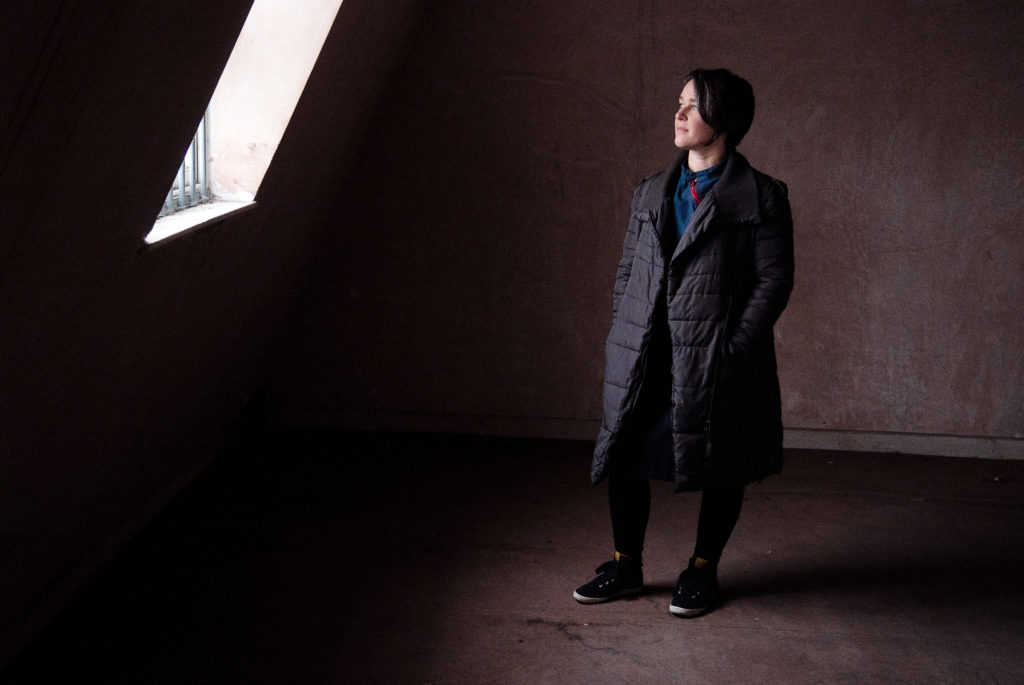
©Simon Webb
Any particular inspirations along the way?
Early on, a key exhibition for me was Rebecca Horn’s solo show at the Tate in 1994. I loved how she combined her body with machines, such strange elaborate, machines that made actions more difficult to perform.
I’m a huge fan of Cornelia Parker. I can’t remember where I first saw her exploded shed, but this is still one of my favourite artworks. Her work hugely connects with scientific ways of thinking and she has such a sense of fascination with everyday things.
My first experience of a truly site-specific installation was Self Storage, a series of installations made by and curated by Laurie Anderson and Brian Eno in a huge empty storage unit in Wembley in 1995. This was a fully immersive experience, and opened my mind to what could be possible through combining many art forms and to experience it, I had to make a journey through a maze of many different spaces.
There was an amazing performance by Birmingham Opera Company of Berg’s Wozzeck in 2001 in a derelict warehouse on the outskirts of Birmingham. The performance happened all around us, and included an opera singer bursting into song right next to me while another was being moved around on a forklift truck. My conclusion was - anything is possible!
And, very recently – a performance of Éliane Radigue’s first work for organ performed by Frédéric Blondy at Organ Reframed Festival at the Union Chapel, London 2018. The experience of listening to the subtle details of how sounds interact in such a resonant space felt like a complete transformation of body and mind.
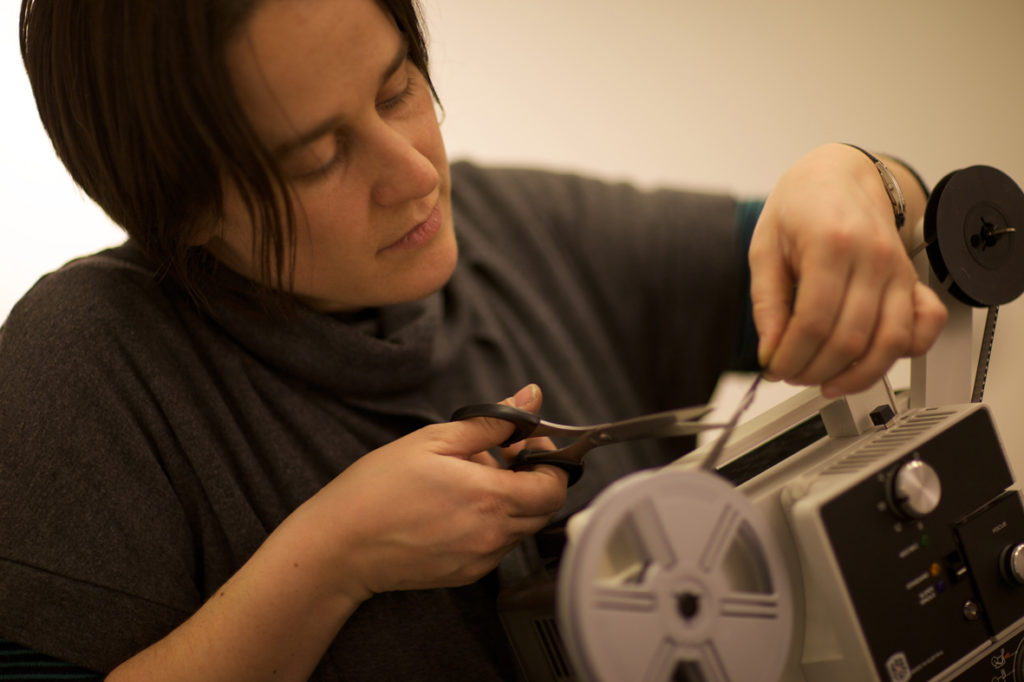
©Jana Chiellino
The natural world seems to play a big part in your work?
Yes, I am equally inspired by watching a startling murmuration, something I’ve been doing a lot lately in Somerset. The sheer wonder of seeing and hearing thousands of starlings flocking together is completely exhilarating. Watching ten thousand cranes take off in Sweden (birds not machines!) and standing at the foot of a giant Redwood in California. Listening to the clicking, popping, crackling seething mass of life in the Amazon river on underwater microphones.
Why did you want to work with Sabine Vogel?
We were introduced by Mats Lindstrom, Director of Elektronmusikstudion Stockholm in 2009, when Mats put us together to collaborate at Norberg Festival. There was an instant connection between the aesthetics of our work, and continued our collaboration and formed the duo ORNIS. We are both passionate about connecting with the natural world and creating experiences that share a sense of wonder and appreciation.
We have spent many hours out recording sounds together in unusual locations, including venturing out into the middle of a lake in a pedalo boat to record underwater sounds in torrential rain because it sounded so amazing! Sabine is a truly captivating performer, and she is the only musician who I’ve heard make sub-bass sounds from a piccolo.
‘We like this idea of a layer which hides and maybe protects a deeper, unexplored area of the ocean.’
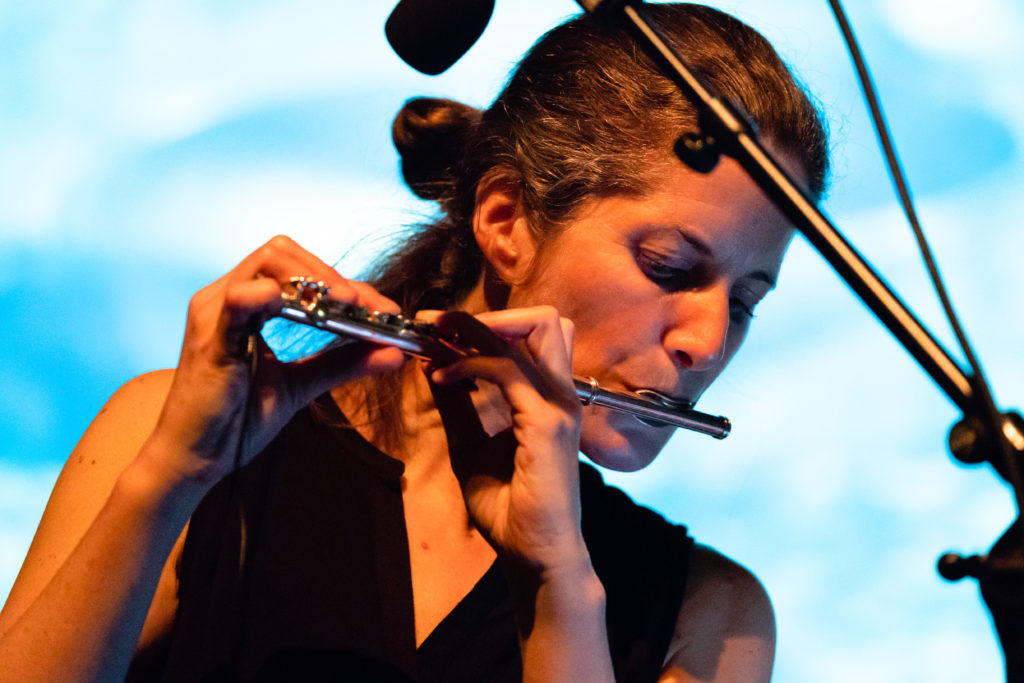
©Peter Adamik
Tell us about Scattering Layer and how it came about?
ORNIS was invited to perform at Kontraklang in Berlin earlier this year, and this became the first performance of Scattering Layer. The title comes from the name of a layer in the ocean which so densely populated with small marine animals, it is often mistaken for the ocean bed. We like this idea of a layer which hides and maybe protects a deeper, unexplored area of the ocean.
We are always keen to experiment with the format of a performance, and consider how we can create an experience that exists somewhere between a concert and an art installation. In the past, this has lead us to project images onto melting sheets of ice in empty swimming pools, and perform on roof tops with aeolian harps activated by the wind.
We are continuing this idea with Scattering Layer, by suspending metal buckets throughout the space, amongst the audience. Each bucket behaves like a speaker, so we can play sounds inside them during the performance. We want to fully immerse the audience in the space by creating a very dispersed and immersive sonic experience, where quiet sounds emanate from many different locations, generating a rich, detailed and complex soundscape.
The buckets are filled with sound, not water, however, many of the sounds and images we create allude to being submerged under water.
How might the audience to experience it?
We will create a constantly shifting, shimmering soundscape that moves all around the room from four main speakers and 20 suspended metal buckets that act as speakers. Each person will have a slightly different experience depending on where they are listening from. At points it might feel like being in the middle of a swarm of bees or a murmurating flock of starlings.
What fires you up?
The moment when an artwork I have made is experienced live for the first time by a new audience.
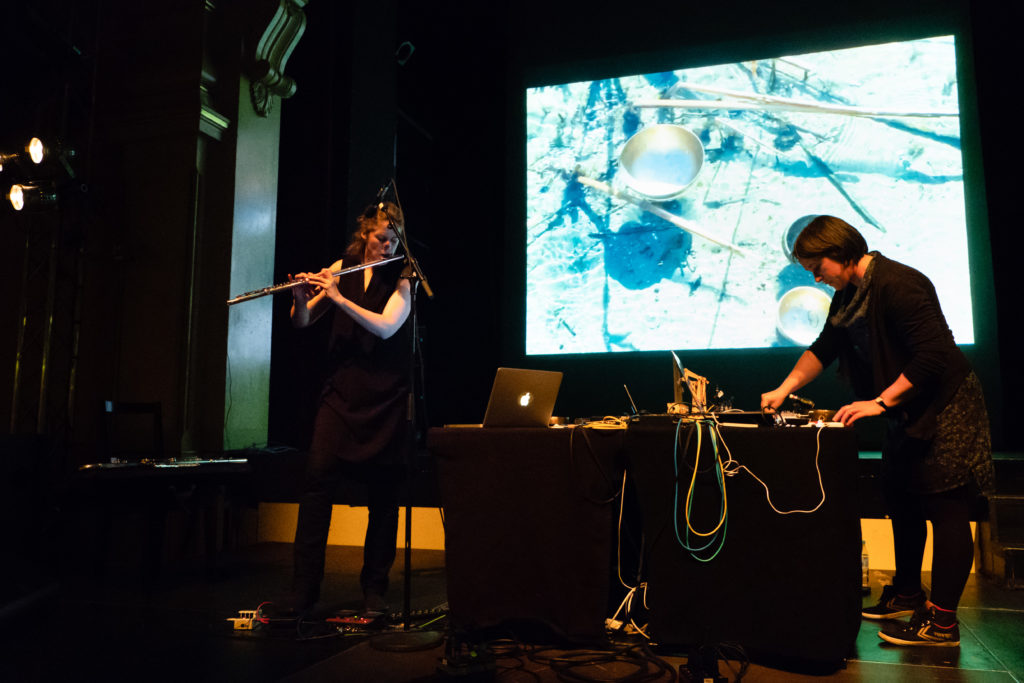
©Peter Adamik
What have you been working on recently?
I’ve recently created a new outdoor light and sound work called Chirp & Drift which was premiered at Light Up Lancaster in November 2018. This is a flock of mechanised instruments that appear to be bird-like, with bellows as wings. The wing-bellows play accordion reeds, and light up when they sound. The flock makes music outdoors in a tree, and this music is derived from Morse code messages which can be ‘tweeted’ to the tree.
I liked the idea that the bird-instruments create their songs from twitter messages via an old fashion means of translation, and end up being abstracted into music.
What’s your next project?
Directly after Scattering Layer I’m going away on an artists residency to Sri Lanka for six weeks. I’m excited about what I will make on this trip, as I will be in a completely different environment and with new people to work with too. I’m keen to see if I can harness the energy and power of the wind and sun, to create sound and sculptural artworks.
On my return I’ll be continuing with a new project inspired by a fascinating area of peat bog in the far north of Scotland called the Flow Country. I’ll be learning about the complex biodiversity and importance of the Flow Country from scientists and conservationists working there at an RSPB reserve. I’ve made one trip there and it is absolutely captivating by dint of its sheer vastness. I’m thrilled to have the opportunity to learn more about it from experts and also keen to see some rare birds. I’ll be creating a series of installations in response to this unique landscape which form part of a group show produced by Cryptic for the Royal Botanical Gardens in Edinburgh during August 2019.
Guilty pleasures?
The Archers.
Pet hates?
The Archers.
